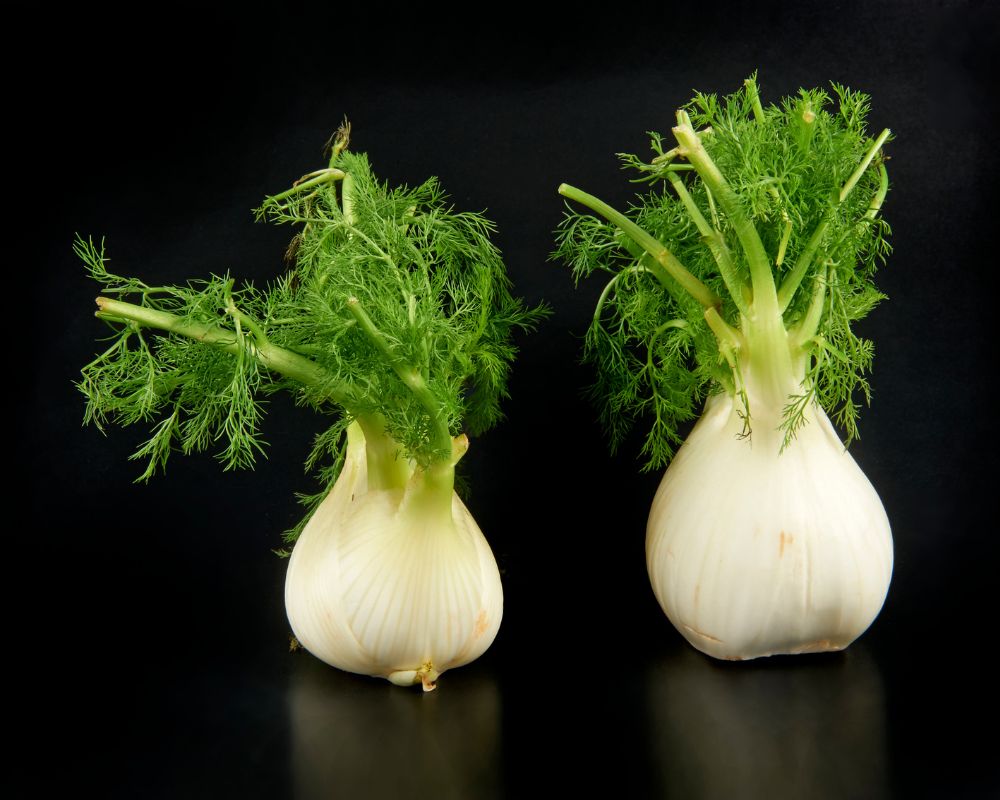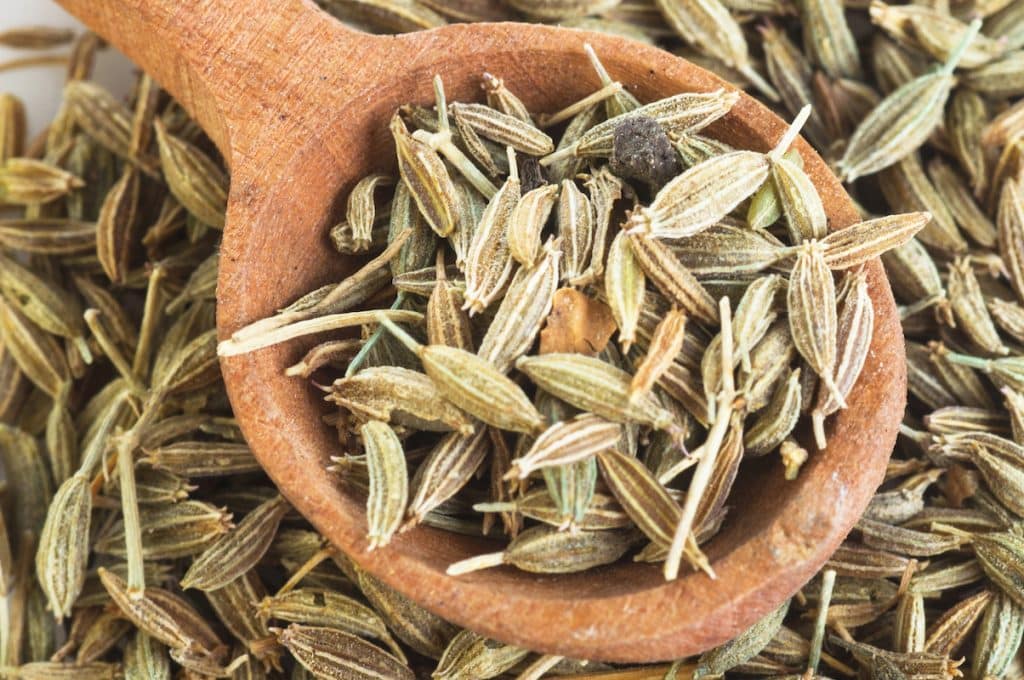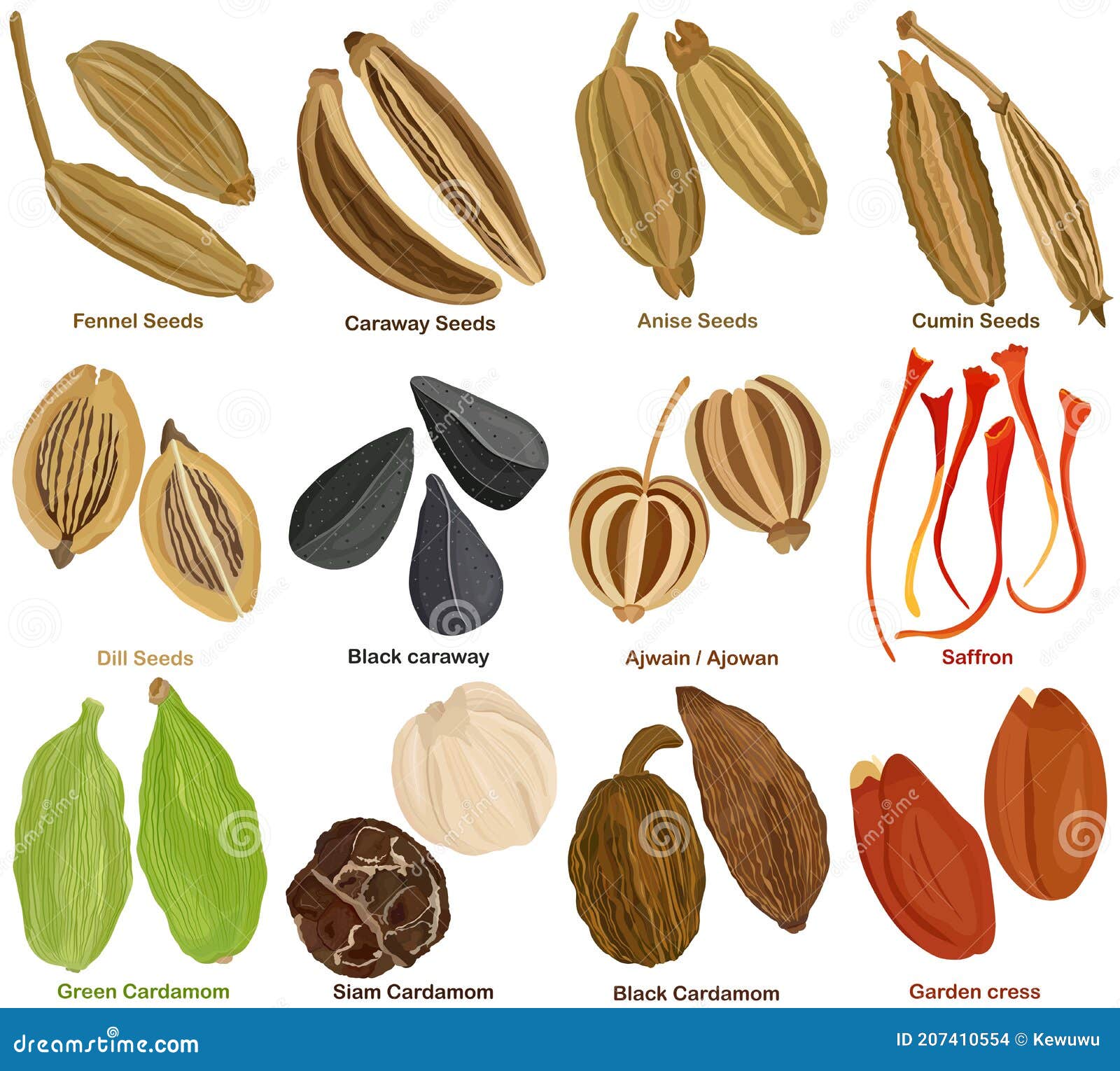Introduction To Fennel And Caraway

Fennel and caraway are two popular herbs with distinct flavors that often get confused due to their similarities. Although they belong to the same family, Apiaceae, they are different plants with their own unique characteristics. Fennel, known for its feathery leaves and bulb-like base, has a sweet and aromatic flavor reminiscent of licorice or anise. On the other hand, caraway has a pungent and slightly bitter taste with hints of pepper and citrus. While both herbs have their own set of health benefits and culinary uses, understanding their differences will help you choose the right one for your dishes.
1 What Is Fennel?
Fennel is a herb that belongs to the Apiaceae family. It is characterized by its feathery green leaves and bulb-like base. Fennel has a distinct sweet and aromatic flavor that is often compared to that of licorice or anise. It is commonly used in cooking to add flavor to dishes, particularly in Mediterranean and Asian cuisines. Fennel seeds, which come from the dried fruit of the plant, are also used as a spice. Apart from its culinary uses, fennel is known for its health benefits, including aiding digestion and promoting respiratory health.
2 What Is Caraway?
Caraway is an herb belonging to the Apiaceae family, just like fennel. It is characterized by its small, crescent-shaped seeds that have a distinct flavor. Caraway seeds have a unique taste that is often described as warm, earthy, and slightly sweet, with a hint of citrus. They are commonly used in various cuisines, particularly in European and Middle Eastern dishes. Caraway seeds are known for their aromatic properties and are used as a spice to enhance the flavor of bread, cheese, sausages, and pickled vegetables. In addition to their culinary uses, caraway seeds are also believed to have several health benefits, including aiding digestion and relieving gastrointestinal discomfort.
Fennel Overview

Fennel is an herb that belongs to the Apiaceae family. It is known for its aromatic and anise-like flavor. Fennel seeds are oval-shaped and come in green or yellow-brown colors. They have a slightly sweet taste and a licorice-like aroma. Fennel is commonly used in cooking, particularly in Mediterranean and Italian cuisines. It pairs well with pork dishes and is often used to flavor sausages, soups, and marinades. Additionally, fennel has various health benefits, including aiding digestion, reducing inflammation, and promoting healthy skin. Its versatile flavor and numerous health benefits make fennel a popular ingredient in many dishes.
1 Fennel Taste And Aroma
Fennel seeds are known for their distinct taste and aroma. They have a slightly sweet and refreshing flavor with hints of licorice and anise. The aroma of fennel seeds is strong and aromatic, reminiscent of black licorice. When used in cooking, fennel adds a unique and pleasant fragrance to dishes. Its sweet and aromatic profile makes it a popular choice for flavoring sausages, soups, marinades, and various other dishes. Whether used whole or ground, fennel seeds bring a delightful taste and aroma to culinary creations.
2 Health Benefits Of Fennel
Fennel offers numerous health benefits thanks to its rich nutritional profile.
- Digestive Aid: Fennel has long been used as a natural remedy for digestive issues such as bloating, indigestion, and constipation. It acts as a carminative, helping to relieve gas and promote proper digestion.
- Anti-inflammatory Properties: Fennel contains anti-inflammatory compounds like anethole and quercetin, which can help reduce inflammation in the body. This makes it beneficial for conditions such as arthritis and inflammatory bowel disease.
Fennel’s health benefits make it a great addition to your diet, whether enjoyed raw, cooked, or in the form of fennel tea.
Caraway Overview

Caraway is a biennial herb that belongs to the same family as fennel, but it possesses distinct characteristics. The seeds of the caraway plant have a pungent, earthy flavor with a hint of sweetness. They are often described as having a warm, nutty taste with aromatic and slightly bitter undertones. Caraway seeds are commonly used in Central and Eastern European cuisines, where they play a prominent role in dishes like sauerkraut, rye bread, and traditional liqueurs. Caraway seeds also offer a range of health benefits, including aiding digestion, promoting heart health, and providing antioxidant properties.
1 Caraway Taste And Aroma
Caraway seeds have a distinctive taste and aroma that sets them apart from other spices. They are known for their earthy and nutty flavor, with aromatic and slightly bitter undertones. The taste of caraway seeds can be described as warm and pungent, with a hint of sweetness. When toasted or ground, the aroma becomes even more pronounced, releasing a fragrant and enticing scent. This unique flavor profile makes caraway seeds a popular choice in various cuisines, adding depth and complexity to dishes like sauerkraut, rye bread, and traditional liqueurs.
2 Health Benefits Of Caraway
Caraway seeds are not only delicious in flavor but also offer several health benefits. Here are two key benefits of including caraway in your diet:
- Digestive Health: Caraway seeds have long been used as a natural remedy for digestive issues such as bloating, indigestion, and stomach cramps. They contain compounds that can help stimulate the production of digestive enzymes, improve gut motility, and provide relief from gastrointestinal discomfort.
- Anti-inflammatory Properties: Caraway seeds possess anti-inflammatory properties that can help reduce inflammation throughout the body. This can potentially benefit individuals with conditions such as arthritis, asthma, and inflammatory bowel disease.
By incorporating caraway seeds into your meals, you can enjoy both their culinary delights and their potential health-enhancing properties.
Culinary Uses Of Fennel And Caraway

Fennel and caraway seeds are both popular spices that add unique flavors to a variety of dishes. Fennel seeds are commonly used in Italian and Mediterranean cuisine, where they are often added to pasta sauces, soups, and roasted vegetables. They can also be used to flavor breads and desserts. Caraway seeds, on the other hand, are commonly used in Central European dishes such as sauerkraut, rye bread, and potato dishes. They add a distinct and slightly sweet flavor that pairs well with hearty and savory dishes. Both fennel and caraway seeds can be used whole or ground, depending on the desired intensity of flavor.
1 Fennel In Cooking
Fennel seeds are widely used in cooking to add a distinct and aromatic flavor to various dishes. They can be used whole or ground, depending on the recipe. In Italian and Mediterranean cuisine, fennel seeds are often added to pasta sauces, soups, and roasted vegetables to enhance the flavors. They can also be used to flavor breads, desserts, and even beverages like herbal teas. The anise-like flavor of fennel seeds adds a unique touch to dishes and pairs well with seafood, poultry, and pork. So, next time you want to add a hint of licorice-like flavor to your recipes, reach for fennel seeds.
2 Caraway In Cooking
Caraway seeds, derived from the Carum carvi plant, are a popular addition to various dishes around the world. Their strong, earthy flavor adds depth and complexity to both sweet and savory recipes. In cooking, caraway seeds are often used in Eastern European cuisine, particularly in dishes such as sauerkraut, rye bread, and goulash. They can also be incorporated into roasted vegetables, soups, stews, and even desserts like cookies and cakes. The distinct flavor of caraway seeds pairs well with ingredients like potatoes, cabbage, and pork, giving dishes a unique and delicious aroma. So, if you’re looking to elevate your recipes with a bold and aromatic kick, caraway seeds are a great choice.
Fennel Vs Caraway: Similarities And Differences

When comparing fennel and caraway, it’s important to note their similarities and differences.
Similarities:
- Both fennel and caraway are flowering plants from the same family, Apiaceae.
- They have similar appearances, with long slender seeds.
- Both seeds have a distinct anise-like flavor, although caraway has a more complex and earthy taste.
Differences:
- Fennel seeds have a sweeter, milder taste compared to the stronger flavor of caraway seeds.
- Fennel is commonly used in Mediterranean and Italian cuisines, while caraway is popular in Eastern European dishes.
- Caraway seeds have a peppery, nutty undertone, while fennel has a more dominant licorice flavor.
Overall, while fennel and caraway share some similarities, their unique flavors and culinary uses make them distinctive ingredients in their own right.
1 Flavor Comparison
When comparing the flavors of fennel and caraway, there are distinct differences to take note of. Fennel seeds offer a mild licorice undertone with a subtle sweetness, which adds a refreshing touch to lighter dishes. On the other hand, caraway seeds provide a robust and slightly bitter flavor with peppery notes. This makes them a great addition to hearty and savory dishes. While both seeds have hints of anise and licorice, fennel leans towards a sweeter taste while caraway takes on a more earthy and nutty profile. The flavor profiles of fennel and caraway are unique in their own way, offering a range of culinary possibilities.
2 Nutritional Comparison
When comparing the nutritional profiles of fennel and caraway, there are some differences to note. Both seeds are low in calories, with fennel seeds containing 345 calories per 100 grams and caraway seeds containing 333 calories per 100 grams. However, people typically consume these seeds in smaller amounts, so the calorie difference may not be significant. In terms of nutrients, fennel seeds are a good source of fiber, vitamin C, calcium, and iron. Caraway seeds, on the other hand, provide more vitamin K and vitamin E. Overall, both fennel and caraway seeds offer various health benefits and can be incorporated into a balanced diet.
Conclusion

In conclusion, both fennel and caraway offer unique flavors and a range of health benefits. Fennel is known for its sweet and aromatic profile, making it a popular choice for dishes like pork and seafood. Caraway, on the other hand, has a more complex flavor with earthy and nutty undertones, making it a versatile ingredient in various recipes. Whether you prefer the sweetness of fennel or the savory notes of caraway, incorporating these anise-flavored seeds into your cooking can add a delightful twist to your dishes. So go ahead and experiment with these flavorful seeds and discover your favorite!
1 Choosing Between Fennel And Caraway
When it comes to choosing between fennel and caraway seeds, it ultimately depends on your personal preferences and the specific flavors you want to incorporate into your dishes. Consider the following factors when making your decision:
- Flavor Profile: Fennel seeds have a sweet and aromatic flavor with hints of anise and licorice, making them a great choice for dishes that need a subtle sweetness. Caraway seeds, on the other hand, have a more complex flavor with earthy and nutty undertones, adding depth to savory dishes.
- Culinary Use: Fennel seeds are commonly used in Mediterranean and Italian cuisines, particularly in dishes like pork roasts, seafood, and salads. Caraway seeds, on the other hand, are often found in Eastern European and German recipes, enhancing the taste of sausages, bread, and sauerkraut.
- Personal Preference: Consider your individual taste preferences. If you enjoy the licorice-like flavor of fennel, opt for fennel seeds. If you prefer the earthy and nutty taste of caraway, go for caraway seeds.
Ultimately, both fennel and caraway offer unique flavors and can bring a delightful twist to your dishes. Experiment with both and discover your personal favorite!
2 Final Thoughts On Anise-flavored Showdown
In the battle between fennel and caraway seeds, both offer unique and delicious flavors that can enhance a wide range of dishes. Whether you prefer the sweet and aromatic taste of fennel or the earthy and nutty notes of caraway, incorporating these seeds into your cooking can add depth and complexity to your meals. Experiment with both and discover which flavor profile you enjoy the most. Whichever you choose, both fennel and caraway seeds are sure to bring a delightful anise-like twist to your culinary creations.
FAQ: Fennel vs Caraway
Q: What is fennel?
A: Fennel is a flowering plant that belongs to the carrot family. It has a bulbous base, feathery green leaves, and bright yellow flowers. The plant is native to the Mediterranean region and is widely used in cooking for its aromatic and licorice-like flavor.
Q: What is caraway?
A: Caraway, also known as meridian fennel or Persian cumin, is a biennial plant that belongs to the carrot family. It has finely divided feathery leaves and small white flowers. Caraway seeds, which are the most commonly used part of the plant, have a distinctive earthy, slightly peppery flavor.
Q: Are fennel and caraway related?
A: Yes, fennel and caraway are distant cousins and belong to the same family, Apiaceae. However, they have different appearances and flavors.
Q: How do fennel and caraway differ in taste?
A: Fennel has a mild, sweet, and slightly aromatic flavor with a hint of licorice. The taste of fennel bulbs is reminiscent of celery or mild anise. On the other hand, caraway has a robust, earthy, and warm flavor with a slight peppery kick. It is often described as having a combination of flavors resembling anise, dill, and cumin.
Q: Can fennel and caraway be used interchangeably in recipes?
A: While fennel and caraway are both used as flavoring agents, they have distinct flavor profiles that are not identical. Therefore, they cannot be used interchangeably if you want to achieve the specific taste associated with each spice.
Q: How are fennel and caraway used in cooking?
A: Fennel is used in both raw and cooked dishes. It is commonly used in salads, soups, stews, and roasted vegetables. Fennel seeds are also used in baking and as a seasoning in various cuisines, including Mediterranean and Indian.
Caraway seeds are widely used as a spice in European cuisines, especially in German, Hungarian, and Scandinavian dishes. They are commonly used in bread, sauerkraut, cheese, stews, and as a flavoring in liqueurs.
Q: Are there any health benefits associated with fennel and caraway?
A: Fennel is known for its digestive properties and is often used to relieve bloating and indigestion. It also contains fiber, antioxidants, and various vitamins and minerals.
Caraway is believed to have carminative properties, which means it can help alleviate gas and indigestion. It is also a good source of fiber, antioxidants, and essential minerals.
Q: Can fennel and caraway be used together in recipes?
A: Yes, fennel and caraway can be used together in recipes to create complex flavors. Their combination can add depth and richness to dishes like roasted meats, vegetable dishes, and bread recipes.
In summary, while fennel and caraway share some similarities as members of the same plant family, they have distinct flavors and are used differently in cooking. Each spice brings its unique taste and aroma, making them valuable additions to a variety of dishes.

From At-Home Dinner Parties to Family Reunions to Office Parties, we can cater your next Event!